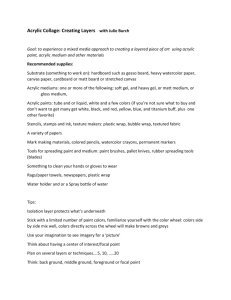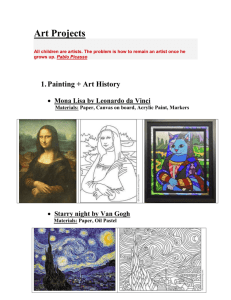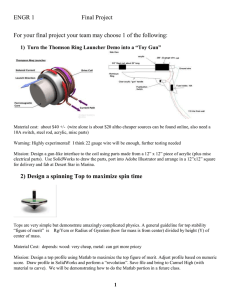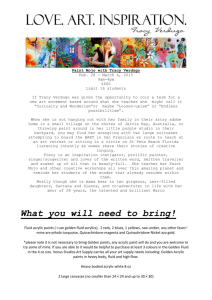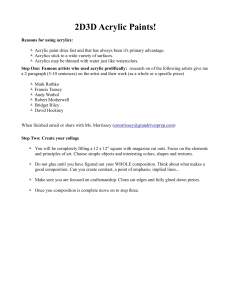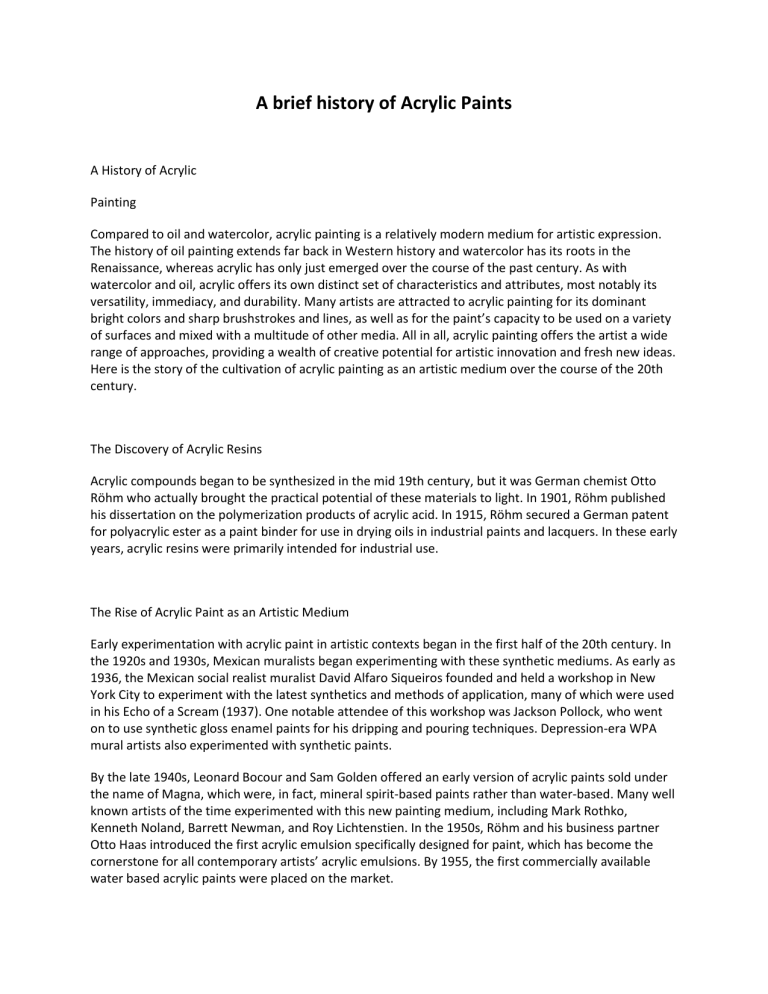
A brief history of Acrylic Paints A History of Acrylic Painting Compared to oil and watercolor, acrylic painting is a relatively modern medium for artistic expression. The history of oil painting extends far back in Western history and watercolor has its roots in the Renaissance, whereas acrylic has only just emerged over the course of the past century. As with watercolor and oil, acrylic offers its own distinct set of characteristics and attributes, most notably its versatility, immediacy, and durability. Many artists are attracted to acrylic painting for its dominant bright colors and sharp brushstrokes and lines, as well as for the paint’s capacity to be used on a variety of surfaces and mixed with a multitude of other media. All in all, acrylic painting offers the artist a wide range of approaches, providing a wealth of creative potential for artistic innovation and fresh new ideas. Here is the story of the cultivation of acrylic painting as an artistic medium over the course of the 20th century. The Discovery of Acrylic Resins Acrylic compounds began to be synthesized in the mid 19th century, but it was German chemist Otto Röhm who actually brought the practical potential of these materials to light. In 1901, Röhm published his dissertation on the polymerization products of acrylic acid. In 1915, Röhm secured a German patent for polyacrylic ester as a paint binder for use in drying oils in industrial paints and lacquers. In these early years, acrylic resins were primarily intended for industrial use. The Rise of Acrylic Paint as an Artistic Medium Early experimentation with acrylic paint in artistic contexts began in the first half of the 20th century. In the 1920s and 1930s, Mexican muralists began experimenting with these synthetic mediums. As early as 1936, the Mexican social realist muralist David Alfaro Siqueiros founded and held a workshop in New York City to experiment with the latest synthetics and methods of application, many of which were used in his Echo of a Scream (1937). One notable attendee of this workshop was Jackson Pollock, who went on to use synthetic gloss enamel paints for his dripping and pouring techniques. Depression-era WPA mural artists also experimented with synthetic paints. By the late 1940s, Leonard Bocour and Sam Golden offered an early version of acrylic paints sold under the name of Magna, which were, in fact, mineral spirit-based paints rather than water-based. Many well known artists of the time experimented with this new painting medium, including Mark Rothko, Kenneth Noland, Barrett Newman, and Roy Lichtenstien. In the 1950s, Röhm and his business partner Otto Haas introduced the first acrylic emulsion specifically designed for paint, which has become the cornerstone for all contemporary artists’ acrylic emulsions. By 1955, the first commercially available water based acrylic paints were placed on the market. Acrylic Painting: Shaping Artistic Movements in the Later 20th Century Acrylics burst onto the artistic scene at a time when artists were beginning to explore movements and forms such as pop culture, photorealism, abstract expressionism, and pop art. Acrylics provided an ideal medium for these art forms, which sought hard-edged flat images and distinct use of line. American artists such as Andy Warhol, Robert Motherwell, Larry Poons, and Helen Frankenthaler, and British artists like Bridget Riley and David Hockney were attracted to the acrylic medium for these very reasons, as well as for the flexibility afforded by these paints. Media could be mixed, different textures and consistencies could be achieved (by mixing sand, water, or other elements into the paint), colors could be transparent or opaque, and artists could work much more quickly due to its substantially faster drying time. In essence, the arrival of acrylic painting opened up a whole new wave of creativity and possibility in the modern art world that to this day is still a strong influence in artistic forms and trends. Although late to arrive, acrylic painting has had a marked influence in the development of 20th century art movements and forms. The flexibility and versatility it offers the artist unlocks limitless creative vistas that are still being explored today.
